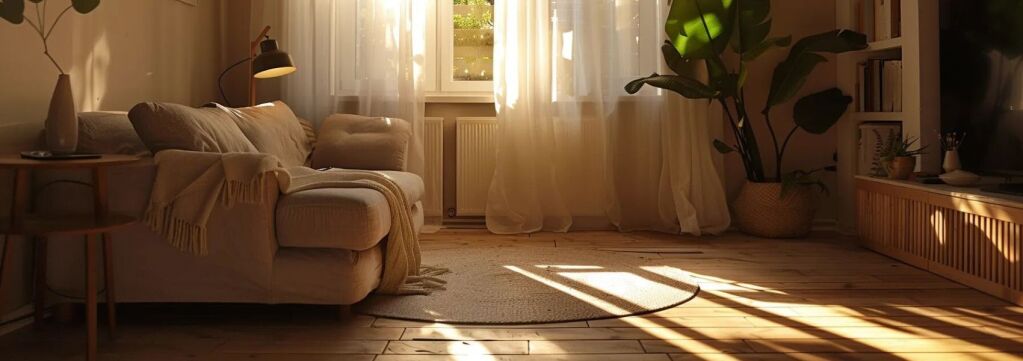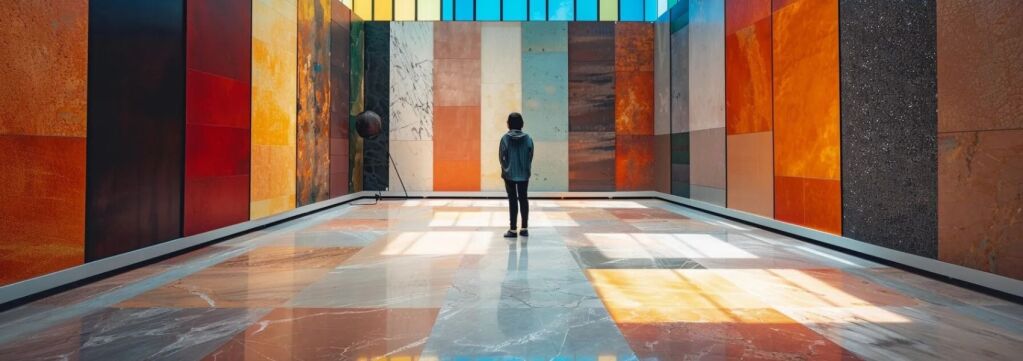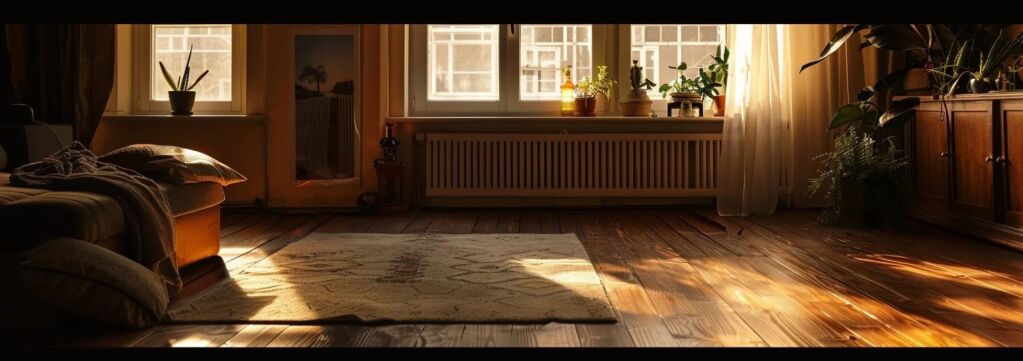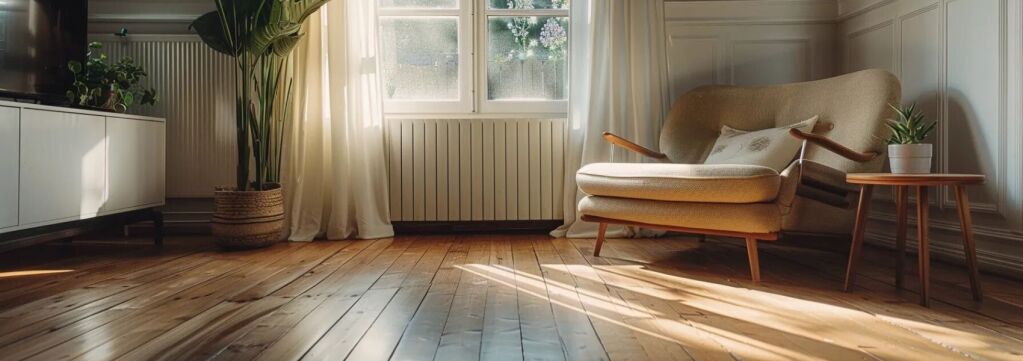Choosing the right flooring color for your home is more than just a design choice—it is about creating a space that reflects your personality and meets your needs. The color of your floors sets the tone for your entire home, influencing the mood and style of each room. Whether you are going for a cozy, warm atmosphere or a sleek, modern look, the flooring color plays a crucial role in bringing your vision to life.
In this blog, we will explore how to select the best flooring color, considering factors like lighting, room size, and existing décor. By the end, you will feel confident in making a decision that enhances your home’s aesthetic and functionality. If you are ready to transform your space with the perfect flooring color, let’s dive in and discover the options that suit your style and needs.
Consider the Room’s Purpose and Users
When selecting a flooring color, it is essential to think about how the room will be used and who will use it. Different rooms serve different functions, and the flooring color should align with those needs. Additionally, the people using the space—whether it is a busy family or a quiet couple—can influence the best color choice.
Aligning Flooring Color with Room Function
For high-traffic areas like entryways and kitchens, darker or mid-tone flooring colors can help hide dirt and wear, making maintenance easier. In contrast, bedrooms and living rooms, where comfort and relaxation are priorities, often benefit from lighter or neutral tones that create a calming atmosphere.
Taking Design Features and Material Functionality into Account
You will need to know what look you’re looking for. For instance, if you have bold, colorful cabinetry, a more neutral floor colors can provide balance. Additionally, material functionality matters—some flooring materials come in limited color options, so you can choose colors that align with design and material durability.
Selecting Colors Based on Room Utilization
For spaces that see frequent use, like family rooms or playrooms, choose colors that can withstand heavy traffic and potential spills. Darker or patterned flooring can be more forgiving in these situations. On the other hand, in rooms like guest bedrooms or formal dining areas, where foot traffic is lighter, you can opt for lighter, more delicate colors.
Room Size and Color Impact
The size of a room plays a crucial role in how flooring color is perceived. The right choice of color can either enhance a room’s spaciousness or create a cozier atmosphere, depending on your goals. Here are some tips to keep in mind:
How Dark Colors Affect Perceived Room Size
Dark flooring colors, like deep browns, grays, or blacks, can make a room feel smaller and more intimate. This effect is often desirable in large, open spaces where you want to create a cozy, warm environment. However, in smaller rooms, dark floors can sometimes make the space feel cramped or enclosed. If you prefer a darker flooring color in a small room, consider pairing it with light-colored walls and ample lighting to balance the effect.
Creating a Spacious Feel with Light Colors
Light flooring colors, such as soft whites, beiges, and light grays, can make a room appear larger and more open. This is particularly beneficial in small or narrow rooms, where the goal is to create a sense of space and airiness. Light-colored floors reflect more light, which brightens the room and gives it a more expansive feel. You can add lighter colors to darker rooms on one wall to brighten the space quickly and easily as well.
Balancing and Harmonizing Colors
When selecting flooring color, it’s essential to create a balanced and harmonious look throughout your home. Below are some tips on how to coordinate flooring color with furniture, maintain consistency across spaces, and define separate areas with distinct colors.

Coordinating Flooring Color with Furniture
If your furniture is bold or dark, opting for a lighter flooring color can create contrast and prevent the room from feeling too heavy. Conversely, if your furniture is light or neutral, a darker floor can add depth and richness to the space. Wood tones, fabrics, and finishes should work harmoniously with your flooring color to create a unified look that feels intentional and well-designed.
Achieving a Cohesive Flow with Consistent Colors
If you have an open floor plan or connected spaces, using the same flooring color throughout can unify the areas and make transitions smoother. However, consistency doesn’t mean monotony—varying textures or adding subtle contrasts in décor can keep the design interesting while maintaining an overall cohesive look that ties your spaces together.
Defining Separate Areas with Distinct Colors
Using distinct flooring colors to define separate areas in your home can be an effective design strategy. This approach works well in open-concept spaces where you want to create visual boundaries between different functional areas, such as the living room and dining area.
Setting the Mood with Flooring Colors

The color of your flooring has a significant impact on the mood and atmosphere of a room. Whether you want to create a formal, warm, bright, or airy environment, the right flooring color can help achieve that. Below, we’ll discuss how different tones and shades can influence the overall feel of your space.
Establishing Formality or Warmth with Dark Tones
Dark flooring tones, like deep browns or charcoal, can lend a sense of formality and elegance to a room. They create a grounded, rich look, perfect for dining rooms or offices. Dark tones also add warmth, making larger spaces feel more intimate and inviting, especially when paired with soft lighting and cozy furniture.
Enhancing Brightness and Airiness with Light Tones
Light flooring tones, such as whites, beiges, and light grays, brighten up a room, making it feel open and airy. These colors reflect more light, which can be especially beneficial in smaller or darker spaces. Light tones create a fresh, clean aesthetic that is perfect for modern and minimalist designs.
Using Colors to Influence Room Atmosphere
Flooring colors can significantly influence a room’s atmosphere. Neutral tones create a calm and balanced space, while bold colors add energy and personality. Warm tones evoke coziness, while cool tones promote relaxation. By carefully selecting your flooring color, you can shape the ambiance to match the desired mood and function of each room.
Related Post: What is the Best Flooring Underlayment For Your Home?
Flooring Material and Color Options
When choosing flooring, the material you select plays a key role in determining the available floor colors and overall design. Each flooring type offers unique possibilities for customizing your space to match your style and needs. Below, we will explore the color and design options for hardwood, carpet, vinyl, and laminate flooring.

Hardwood Flooring Stain Colors and Patterns
Hardwood flooring offers a range of stain colors, from light, natural tones to deep, rich hues. You can choose stains that enhance the wood’s natural grain or opt for bold patterns like herringbone or chevron. These options allow you to customize your floor’s appearance, adding both warmth and character to your space.
Customizing Carpet Colors and Designs
Carpet flooring provides endless possibilities for color and design customization. Whether you prefer neutral shades, vibrant colors, or intricate patterns, carpet allows you to tailor the look to your taste. Additionally, carpet texture and pile height can further influence the room’s feel, making it versatile for any space.
Versatile Vinyl Flooring Colors and Styles
Vinyl flooring is highly versatile, offering a wide array of colors, styles, and textures. Its adaptability makes it ideal for any room, providing durability while allowing you to achieve your desired aesthetic without compromising on style.
Coordinating Laminate Flooring Shades
Laminate flooring mimics the look of wood, stone, or tile while offering a variety of shades to choose from. Whether you’re aiming for a light, airy feel or a dark, sophisticated look, laminate provides a budget-friendly option without sacrificing appearance. Coordinating shades with your décor ensures a seamless and stylish finish throughout your home.
Similar Post: Different Types of Marble Flooring
Find Your Ideal Flooring Color with Murfreesboro Flooring

Choosing the perfect flooring color can transform your home, creating spaces that reflect your style and meet your needs. Whether you’re looking for warmth, brightness, or a balanced look, the right color choice enhances both aesthetics and functionality. At Murfreesboro Flooring, we understand the importance of finding the ideal flooring color that suits your space and lifestyle.
Our expert team is here to guide you through the selection process, offering a wide range of high-quality flooring options. From hardwood and carpet to vinyl and laminate, we have the materials and colors to bring your vision to life. Contact us now to get started!

